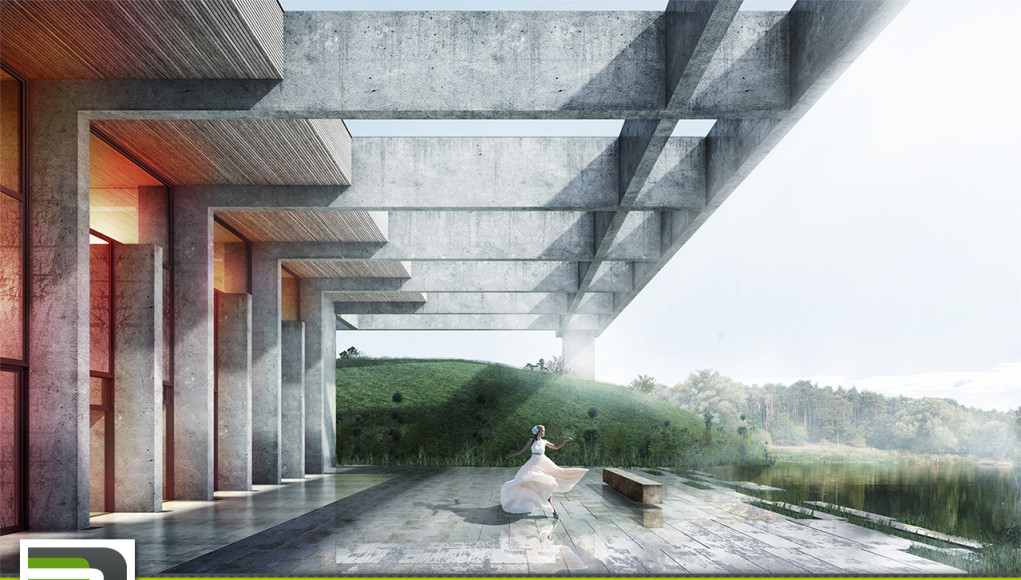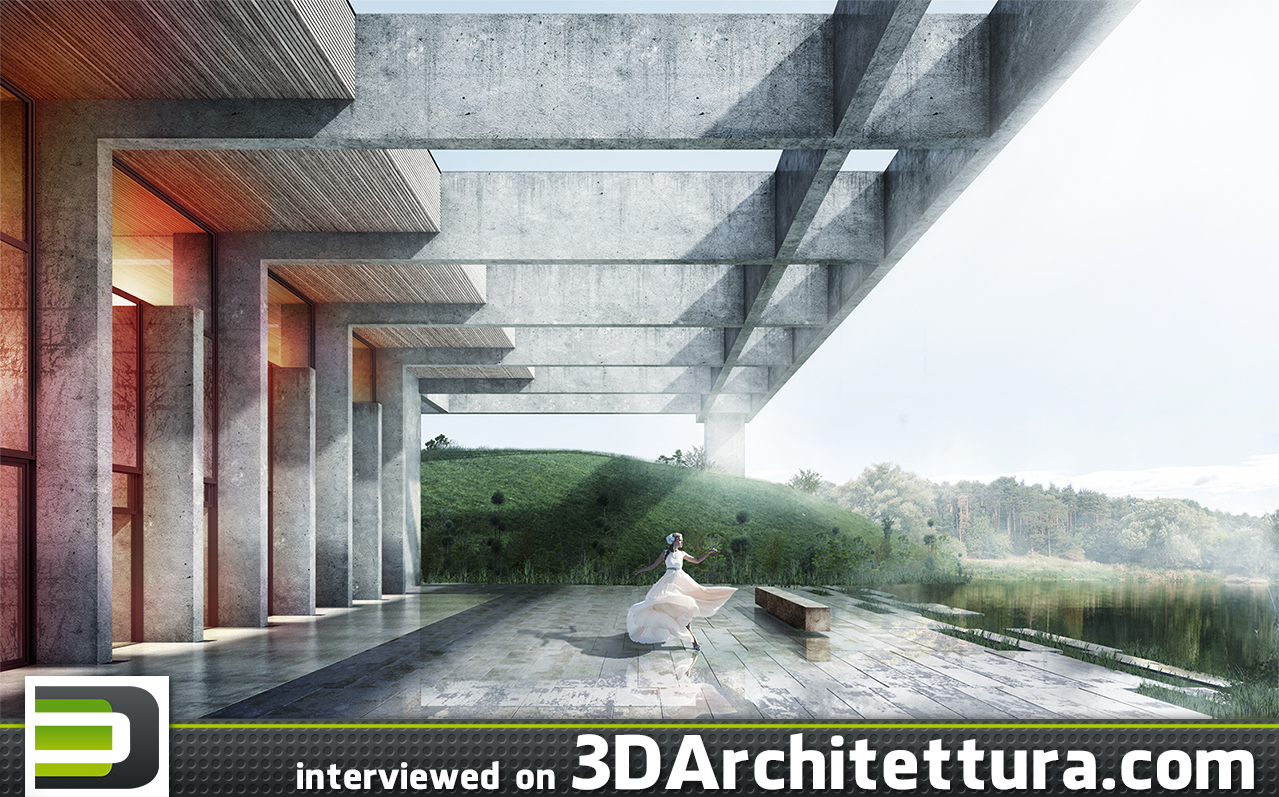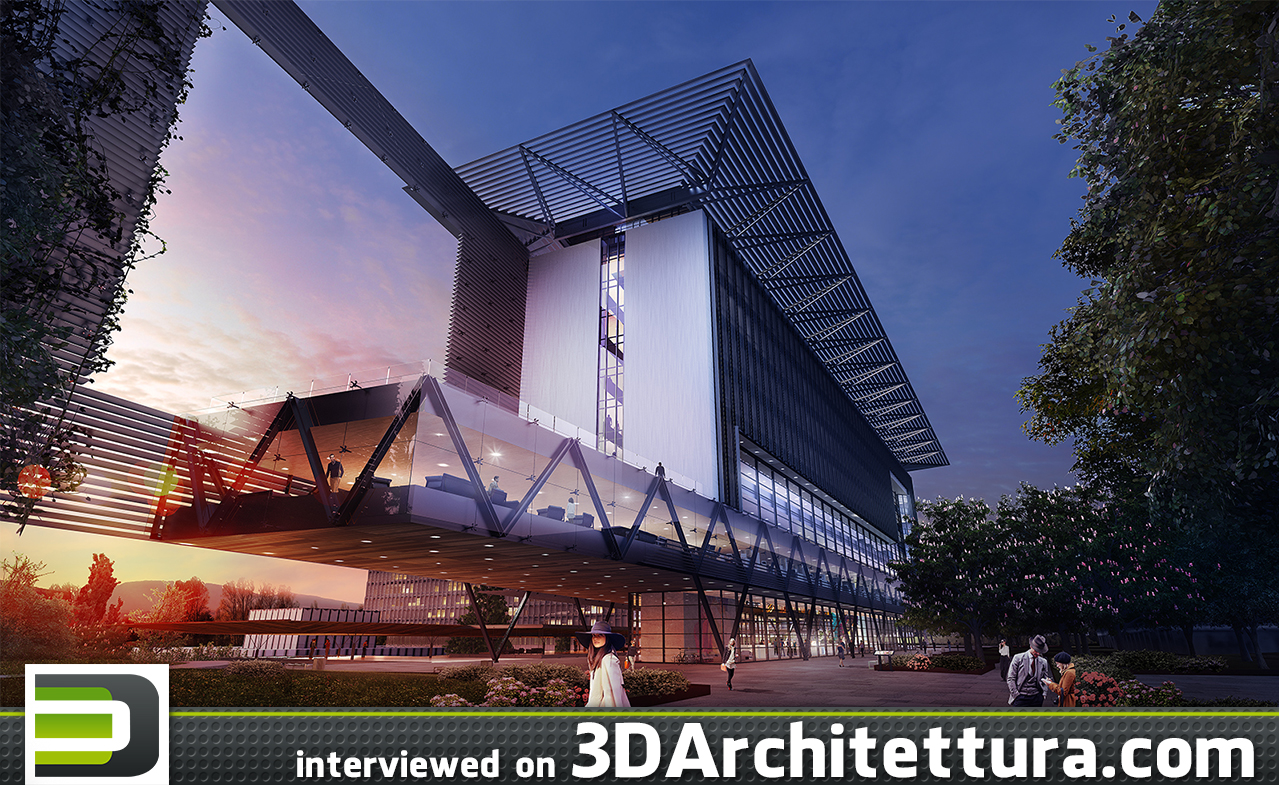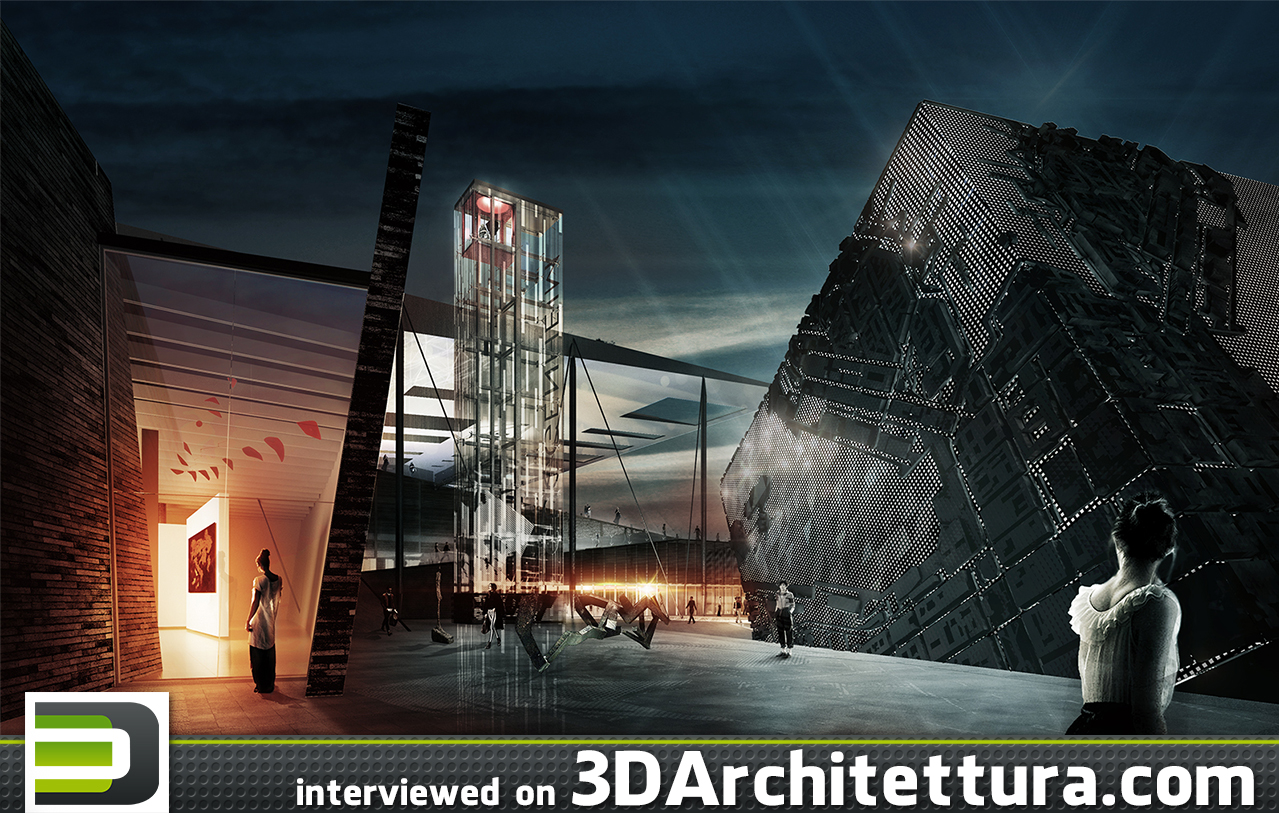High demand for visual quality in videogames pushed technology behind the game industry to surpass capabilities of architects’ CAD tools.
Name: Tudor Gheorghe and Vlad Vernica
Country: Romania
Age: 28
Job: 3D artists and co-founders of COLLIDER
Website: collidervisuals.com
SocialMedia: www.youtube.com/channel/UCAWudua6c7s6ug56mfkmvcw
3DA: Why have you decided to work in 3d-field and when have you started? Where you studied?
COLLIDER: COLLIDER is a two man team: Tudor Gheorghe and Vlad Vernica. We graduated from UAUIM (“Ion Mincu” University of Architecture and Urbanism) in Bucharest, Romania.
As architects we are both passionate about visual arts and the design and visualization of great ideas.
It all started when we realised that the high demand for visual quality in video games pushed the technology behind the game industry to surpass the capabilities of architects’ CAD tools when it comes to showcasing their work. While classic renderers produce photo-realistic results, the game engines provide some perks like realtime rendering, interactive navigation, and 3d visualization, that fit the architects’ need for expressing their ideas to a client even better.
[ot-video type=”youtube” url=”http://www.youtube.com/watch?v=DTdr_WxoGWI”]
Tudor started experimenting with real time rendering as a side-project in august 2011 when the Cryengine free SDK first came out. It wasn’t very intuitive and the community was very small, and the experience he had with still renderings didn’t help much. So he shelved it for a while until he decided to give it another go, this time with more ambition and a team. Vlad had a solid rendering background and was passionate about animations as well, so Tudor asked him to join in trying this out, and we gave it a go under the COLLIDER name, and with a new engine (UE4).
3DA: Which software you usually use for your projects? What has surprised you in positive and/or negative way in the software/plugins for CG during the last year?
COLLIDER:The big surprise was the Unreal engine itself, since it had everything you need: solid documentation, community support, engine devs’ support, great interface, and a short learning curve. The versatility of the engine enabled us to experiment without the drawback of time spent on a trial and error approach like with classic stills. Since the scene is rendered in realtime, you can get the right look through post processing in a matter of minutes by tweaking a few parameters. It also makes it easier to shift the focus on a more personal approach and style, compared to the somewhat formulaic workflow of still renderers.
3DA: What was most difficult for you when you just started working in 3D? And what is now?
COLLIDER: The most difficult thing for us was probably efficiency. When you are learning how to use a certain software, you don’t have a deadline. You can experiment all you want, and if you change your mind you can start over. You have a certain freedom. One of the most difficult things was accommodating experimentation in paid work. Working on a tight schedule may limit your freedom to try out new things, but if you don’t, you will find yourself behind with all the new features and tools. So finding the sweet spot between the two can be a challenge, but we consider it necessary in order to have a competitive edge.
Another challenge is learning from others’ experience. It can be especially hard when you’re new at this and don’t have anything but scattered online sources to learn from. The ones we consider the top in the business are not exactly keen on sharing the trade secrets. This is the reason we thought it would be a good idea to encourage collaborative learning by creating an online guide for architecture visualization using UE4, a guide that anyone can contribute to. The guide is constantly updated and features comments, suggestions and chat. You can find it on our website.
The most difficult thing right now is getting architects and real estate developers to understand the power and impact that realtime interactive 3d experiences can have in their line of work. Besides using them to showcase your idea to a single person, it can also be used as a powerful marketing tool for selling a great concept to masses interested in buying or renting a house / building / office space etc.
3DA: What you can advise to the students who are just starting their way in CG?
COLLIDER: The most important thing for students to understand is that they should never let anything hold them back. For the students reading this: you are in a unique position to be on top of what technology can offer, while also being able to fail with little to no real consequence. Use that to stay on top of your game; focus on finding what motivates you and take initiative to start your own thing early on. This will give you a much needed edge when you graduate.
3DA: What forecast you can make about the future of 3d-world in general?
COLLIDER: The one thing we can’t do (yet) is predict the future. But we can invent it. We can already see the boundaries between the visual arts fading, (we are using a video game engine to provide architectural visualization that can be used as a visual marketing tool.)
As realtime rendering is almost photo-realistic, the focus is shifting toward interactivity. With gadgets that enable 3d experiences soon to come out (Oculus Rift, Samsung’s Gear VR, Sony’s Project Morpheus, Razer’s OSVR, and even Google’s Cardboard) 3d will no longer be a gaming / CAD feature, it will be commonplace.
Another aspect we anticipate is that 3d services like modelling and rendering will become a lot cheaper with the popularisation of game engines because of their low price. More people from all over the world will have access to these tools and the prices for 3d services will fall, leading to a rise in quality due to competitivity, and the need to stand out of the crowd.
[ot-video type=”youtube” url=”http://www.youtube.com/watch?v=OpbAX75e3Ak”]
The videos are modelled in 3DsMax and rendered in UE4.
The images are 3DsMax + Vray + Photoshop

 Russian
Russian

























